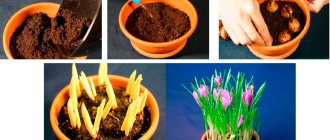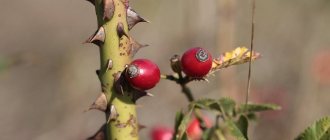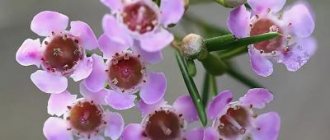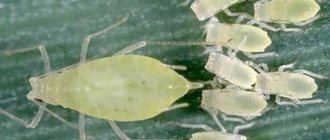Author of the article
Daria Vorontsova
Reading time: 10 minutes
AA
In early spring, crocuses blooming on the windowsill are the perfect decoration for a room, symbolizing the arrival of warmth and spring.
These delicate primroses can safely be called unique, because it is from the petals of some varieties of crocuses that the most valuable and expensive spice in the world - saffron - is made.
Growing crocuses at home is quite simple; these perennial flowers are relatively unpretentious and do not require a lot of money and effort. With the right approach, growing saffron on a windowsill will bring real pleasure and help decorate your home with delicate flowers.
Crocus or saffron: description of the flower
These are representatives of the Iris family - perennial corms resistant to cold. Their flowers are shaped like a glass, a star or a bowl .
The grass-like leaf is often crossed by a white vein. Note! In the evening and in cloudy weather, the flower petals close.
Most crocuses are single-flowered, but there are species with two or more flowers. Thanks to simple care before, during and after budding, these specimens are grown not only in flower beds, but also in the house.
Description of the plant
The crocus flower from our gardens is a cousin of saffron (Crocus sativus) - the flower from which the world's most expensive spice is produced! Of the 80 species of crocuses belonging to the Iris family, as many as fourteen are suitable for growing and decorate flower beds not only in spring, but also in autumn!
Crocus (Crocus vernus), also known as spring saffron or spring crocus, is an unusual plant that develops in early spring. These unique representatives of the flora delight with colors in early spring, along with snowdrops. The flowers are native to the Alps and areas of southern Europe, including the Mediterranean. The alpine species Crocus vernus is considered the direct ancestor of the spring crocuses that decorate home gardens today.
The noble saffron mentioned above has been cultivated by people for 3,000 years, and its images can be admired, including in Minoan frescoes (wall paintings) dating back to 1500-1100 BC. Already for the ancient Greeks, imported aromatic yellow powder, obtained from dried flower pistils imported on commercial ships, was synonymous with luxury. These plants were brought to Europe from Asia Minor around the 16th century.
Crocuses are classified as bulbous plants, although in fact they grow from so-called corms - an underground round or flattened part with a diameter of 2-3 cm.
From the corms, during the growing season, buds grow and bloom, usually yellow and purple, sometimes white, which only after flowering are surrounded by dark green, herbaceous leaves with a silver-green center.
The inflorescences are relatively large for the small plant height (5-20 cm), cup-shaped and have a sweet, honey-like aroma. After unfolding, noticeable yellow stamens are visible in the center of the petals; at night the flower closes into a bud.
Flowering is quite short, usually 7-10 days. After flowering, the leaves continue to grow and elongate, providing the tubers with essential nutrients.
In addition to the early varieties, you can find other types of crocuses blooming in the fall. About 30 species of crocuses are grown.
Types and varieties of crocus
There are many varieties of this beautiful plant. And each one pleases with its unique appearance.
Spring crocus vernus
May have one flower or several. The plant has a variety of colors : from plain white, various shades of purple to striped specimens.
The flowering period occurs in the second half of April.
Two-flowered crocus biflorus
Features a wide variety of shades. Light tones of blue with a lilac tint inside the petals and brown spots on the outside. There are completely white petals, covered with brown stripes on the outside.
The snow-white or yellow throat makes an attractive contrast with the main tone.
Golden crocus chrysanthus
The height of the plant is no more than 20 cm. The bulb is spherical and slightly flattened. The leaves are very narrow. A distinctive feature of the species is the perianth with edges curving outward .
Tomasini crocus tommasinianus
One bulb produces three star-shaped flowers. Their length is within 6 cm. The perianths are lilac with a pink tint , with a white stripe along the edge.
The budding period begins in April and lasts about three weeks.
Note! Many novice gardeners are interested: if the crocuses have bloomed in a pot, what to do next? After budding, you need to remove the dry peduncle and continue care, which should include watering and fertilizing.
Use in home and garden
Crocuses can have many functions in the garden, but look best in a form that mimics natural clumps. A spring lawn intertwined with colorful flowers looks fantastic, although the inconvenience of this solution is the restrictions on mowing the grass.
Crocuses planted in clusters under trees and on the edges of flower beds will become a wonderful colorful accent in early spring, when the garden is still quite gray and gloomy.
It is better to plant crocuses like tulips - in large beds or in rows, creating flower chains that will look great in the garden.
It is popular to plant crocuses in rock gardens and on slopes covered with sedum or climbing plants. They are not at all bothered by the company of other plants, so they can be used for spring compositions with early spring flowers:
- snowdrops,
- hyacinths,
- daffodils.
Experienced gardeners hide crocus tubers in the lower parts of the beds, between the plants, which later come to life and can cover gradually yellowed leaves.
Crocuses are not intended for cut flowers due to their delicacy and small size, but planted in pots they will decorate an apartment, terrace or garden plot.
Autumn-blooming crocuses
Is there anything more beautiful than delicate buds against the background of yellowed foliage? These flowers give you a mood and make you believe that there is a place for beauty in any situation.
Beautiful crocus speciosus
Differs in different colors . The most common shade - from the inside the petals turn from light lilac to a deeper tone. Additional decoration is provided by the finest touches.
Nice crocus pulchellus
An unusually delicate plant in its color. Wisteria-colored petals are dotted with cobwebs of a deeper tone. The diameter of the flowers is from 6 to 8 cm . There can be about 10 of them on one plant. They open in September – October. Tolerates light frosts.
Banatian crocus banaticus
Its leaves are lily (about 15 cm long) . The flowers are large, similar in appearance to irises. The perianth lobes reach 5 cm. The overall color is dominated by cool tones of lilac.
Dutch crocus hybrids
They have quite large flowers in almost all shades of purple . Snow-white ones are also found. For crossing, narrow-leaved, spring and yellow specimens were used.
How to plant crocuses (video)
White crocuses
Spring crocus blooms almost immediately after the soil warms up a little. From one tuber grows one (rarely two) flowers, usually white (but these flowers can also be purple). Flowering of this variety lasts about a month. These flowers can grow up to 16–18 cm in height, their foliage is dark emerald green with a silver line in the middle, and the bulb of this flower is flattened.
Crocus beautiful can bloom with white flowers, as well as different shades of blue and purple. The foliage of this plant can reach 28–30 cm in length. The buds appear in autumn.
Other common white-budded crocuses are:
- "Joan of Arc";
- "Catherine Perlow";
- "Snowstore";
- "Snowbending";
- "Albus";
- Saffron Heuffeliana.
Crocus beautiful can bloom with white flowers
Yellow crocuses
Crocuses with yellow flowers include the following types:
- Saffron is narrow-leaved with a peduncle height of up to 10 cm, blooming in the first ten days of April with yellow flowers with brown stripes along the outer part of the petals.
- The crocus is yellow with a peduncle height of up to 8 cm, its buds are orange with a golden tint. Buds appear in the first ten days of April.
- Crocus susiata with a peduncle height of up to 10 cm, the color of the buds is yellow with a golden tint, the plant blooms in the first ten days of April.
- Crocus Korolkova with a peduncle height of up to 8 cm, yellow buds with an orange tint, purple stripes on the outside of the petals. Blooms in the first ten days of April.
- Golden-flowered crocus with a peduncle height of up to 7–8 cm, small yellow buds.
- “Cream Beauty” – with yellow buds.
Yellow crocuses bloom in the first ten days of April
Lilac and purple crocuses
- Adams crocus with a small peduncle (up to 6 cm long). The color of the flowers can vary from lilac with a light shade to purple with a dark shade of flowers. Their throat can be yellow or white. These beautiful flowers bloom in the first ten days of April.
- Crocus Batana with a high peduncle (up to 14 cm). Their flowers look like small funnels of a soft lilac color. They bloom in the first ten days of September.
- Crocus Heifel with a peduncle height of 11-12 cm, blooming in the first half of April.
Other saffron varieties with similar flowers:
- "Agnes";
- "Vangard";
- "Artabir";
- "Violet Queen";
- "Nigro Boy";
- "Paulus Potter";
- "Pallux";
- "Purpureu Grandiflore";
- "Remembrance";
- "Flower Record".
Crocus Batana blooms in early September
Crocuses: planting and care at home
Choosing a flowerpot
Before you plant crocuses in a pot at home, you need to choose the right container. You will need wide dishes with low sides . From 5 to 10 bulbs should fit into the pot, without touching each other or the walls of the container.
Advice! It is necessary to take care of drainage holes in advance.
The soil
The substrate is fertile and light. To do this, mix equal parts of leaf and turf soil and add ½ part of peat and sand. You can take any soil and add sand .
If the planting material is chosen incorrectly, then you can forget about flowering.
Storing and preparing bulbs
To force crocuses, bulbs purchased in a retail chain, on the Internet, or dug up from a yard flower bed can be used.
Homemade bulbs are dug up no later than mid-summer, large healthy specimens are selected, cleaned of soil, and dried for 5-7 days at temperatures up to 34 °C. Then they are placed in a perforated cardboard box and stored for up to two weeks at 20 °C and the same at 17 °C. After this, the bulbs are given a short-term cold period of rest. They are placed in paper bags and transferred to the refrigerator section with low positive temperatures for 30 days. Bulbs purchased in a store must also be kept in the cold for at least 2 weeks.
Growing crocuses in a pot
Since this plant is easy to care for, it can be grown in flowerpots. It is enough to follow some rules.
Watering crocuses
These plants do not tolerate waterlogging. Watering is carried out no more than 2-3 times a week , only after the top layer of soil has completely dried.
Important! Blooming crocuses are watered using a tray (after 30 minutes, excess water is removed).
Fertilizer and feeding
No fertilizing is required during planting. Next, you should choose fertilizers based on potassium and phosphorus . These plants respond best to them. Fertilizers are applied with the first shoots (diluted in a ratio of two to one), as well as when buds are planted.
In addition, be sure to fertilize crocuses after flowering. It is better to avoid nitrogen-containing drugs.
Care for long-term flowering
The bottom of the container is covered with broken bricks or tiles. The pots are placed in wide trays where excess moisture will drain. When the sprouts reach 3–5 cm, they must be placed in a bright place. The optimal temperature is 10–15 degrees Celsius .
At night there can be drops even to zero and below. At + 20 or higher there will be no flowering. It is also worth protecting crocuses from direct sunlight and artificial lamps.
The video below explains how to care for Crocus at home before and after flowering.
How to grow a plant from seeds
This method of propagating Crocuses
is used extremely rarely, since plants planted in this way begin to bloom only five years after they are planted in the soil.
To grow crocuses
Thus, it is necessary:
*Sow seeds in spring at the end of March or late autumn. The seeds are first soaked in a growth stimulator for forty minutes, after which they are placed in a weak solution of potassium permanganate.
*Before sowing, seeds should be stratified. Pour wet sand into a not very deep container and sow seeds in it. There is no need to bury them in the ground; simply distribute them on the surface. Cover the top with film and place in the refrigerator in the vegetable compartment. The container should be kept there for three weeks.
*When the time comes, remove the container from the refrigerator and place it in a bright and warm place.
*After the seedlings appear, they need to be watered. For watering, it is recommended to use a fine spray.
*When the plants grow a little, they are planted in separate containers or directly in the flowerbed.
Possible problems during cultivation
It is necessary to choose the right planting time. For autumn-blooming crocuses this is summer , and for spring-blooming crocuses it is September. For forcing in a pot, those specimens that bloom in spring are ideal.
Advice! It is not recommended to plant crocuses of different varieties in the same container. They do not have the same bud period and flower size. The flowerpot will not look aesthetically pleasing.
With poor feeding and poor drainage, chlorosis develops. The leaves are turning yellow. It is better to moderate watering.
Suitable varieties for home
Dutch varieties are recommended as potted plants. These include the following:
- Prins Claus produces a pleasant and long-lasting aroma; when the appropriate conditions are created, it can bloom in winter;
- Jeanne D'Arc resembles snowdrops, only with larger flowers, the core of the buds is golden;
- Flower Record with a small stem, but voluminous inflorescences of a rich purple color;
- Blue Pearl means blue pearl; variety with azure buds, yellow at the base.
As a rule, flower growers do not stop at just one option; they create entire kaleidoscopes of different crocuses on their windowsills. The only condition is not to plant dissimilar varieties together in one container, otherwise you may end up with sprouts of different sizes and non-simultaneous flowering. The following varieties are also suitable as indoor flowers:
- Cream Beauty (delicate creamy shade);
- Golden Yellow (hybrid);
- Remembrance (rich lilac color);
- Crocus Oxonian (with dark blue buds and golden-orange core).
Pests and diseases of crocuses
Buds covered with light spots and deformed petals indicate the presence of a viral infection. You need to get rid of such a specimen and disinfect the soil with a solution of potassium permanganate.
The bulbs are also often affected . They soften, the scales separate, and spots are visible underneath. It's a fungus. For preventative purposes, the bulbs are dried and treated with antifungal drugs before planting.
Means and methods
Crocus or saffron is a delicious spring primrose grown in certain climates, often on an industrial scale, to produce a special seasoning with an unusual taste.
Greek and Iranian saffron, which has a unique and refined aroma, is especially valued.
Like any bulbous plant with beautiful flowers (such as tulips or hyacinths), bulbs can be germinated and forced to bloom by providing them with the appropriate conditions.
Features of forcing
Blooming crocuses are a real decoration. It is not difficult to drive out these plants . We offer some simple tips.
Selection of planting material
Dutch hybrids are the most suitable for this. With their help you can get large and impressively beautiful plants. When choosing a variety, it is better to focus on flowering periods. The bulbs must be completely healthy and have a diameter of at least 5 cm.
Cooling
Rooting of bulbs in nature occurs successfully at low temperatures. You can place containers in garden soil. But there is another option: use a refrigerator or cellar , where the temperature is kept between +4–9 degrees.
Each pot is sealed with film. When dry, the soil is moistened.
Rooting flowering
For positive results, you should cool the bulbs before planting and choose the right containers and soil. Keep the plantings in the dark for a couple of months (until green sprouts appear).
This video talks about the features of forcing Crocuses.
This video shows the forcing of Crocuses after three months.
Landing
Into the ground
The planting site must be cleared of grass, weeds, and stones. The distance between plants and planting depth depend on the size of the bulb.
The corms are placed in the ground in separate holes made with a peg - approximately 10 cm deep and at a distance of 7-10 cm between individual flowers. Because they look best in clumps, you can place a few to a dozen bulbs in one area.
It is also convenient to use a special device - a seeder for bulbous plants, which allows you to easily make a hole in the soil of the required depth.
It is ideal to plant crocus bulbs in groups of 3-9.
The bulbs are planted in holes and covered with pre-dug soil on top. Even if the bulb leans when soil is added, the plant will naturally correct the position over time.
On the lawn
Crocuses can be planted on the lawn. You need to choose a suitable sunny, fairly safe place, because crocuses cannot withstand trampling.
Work order:
- You need to cut the lawn with a spatula and remove the grass to a depth of 8-10 cm.
- Flower bulbs are planted in the resulting area, sprinkled with soil, and the soil is lightly compacted. Cover with previously removed turf.
- The turf should not be too dense to allow flowers to reach the surface. Plantings are watered.
So it’s worth planting the bulbs in special baskets that make them easier to dig up and find later. Baskets also prevent flowers from spreading across the lawn. Planted bulbs need to be watered abundantly.
Basket for planting bulbous plants
In pots
Crocus is ideal for growing in pots. You should choose large, healthy tubers, which are planted in flat pots in the fall. If flowers planted in pots are kept for 10 weeks in a shaded room with a temperature below 9 °C, and after this time at the end of January they are moved to a room with a temperature of 15-17 °C, beautiful purple, yellow, white flowers can be obtained , which will bloom earlier than in nature.
8.Note, interesting facts
Crocus stigmas are used to make seasonings (another name is saffron) and for medicinal purposes.
In Europe, crocus became a symbol of wealth and superiority, as it was worth fabulous money as a seasoning. The flower is often used as a heraldic symbol - it is depicted on the coats of arms of the city of Mozdok (North Ossetia), the municipality of Letux (Spain) and others, and was also often depicted on various coats of arms in France.
Considering that the crocus often breaks through the thickness of the snow and appears immediately with buds, the flower can be considered a symbol of perseverance and strength, as well as a symbol of the awakening of nature.
In China, only emperors could wear saffron-colored clothes. The flower acquired a negative connotation in Ancient Rome - it became a symbol of wastefulness, since purchasing saffron for huge sums of money, the floor of the room was covered with the precious seasoning during feasts.
Crocus sativus is used in homeopathy.
Hydroponics.
Pests of culture
Often, when planting crocuses in the ground, pests become rodents that dig holes in the soil and feed on the bulbs. Sometimes animals nibble on rhizomes, but it also happens when mice and moles carry them into holes.
If damaged, the tubers rot, the plant is taken out and becomes weak. When flower bulbs are damaged by rodents, the tuber is cut off, sprinkled with ash, and then dried in air for several hours.
To prevent rodents from visiting the site, it is recommended not to leave sods with grass on the territory, as the animals form nests in it. Since mice often do not move further than three meters from the nests, it is better to clean the area within such a radius.
Caterpillars of butterflies that fly around crops can also damage plant rhizomes. They are noticeable during weeding carried out in the fall. In this case, they are treated with fungicides and insecticides.
The description of the crocus plant provides growing rules for the healthy development of the plant. It is important to ensure normal substrate quality. Clay soil becomes a habitat for underground slugs, which also feed on plant rhizomes.
They get rid of them with special preparations sold in gardening stores. For prevention, add a layer of sand during planting.











